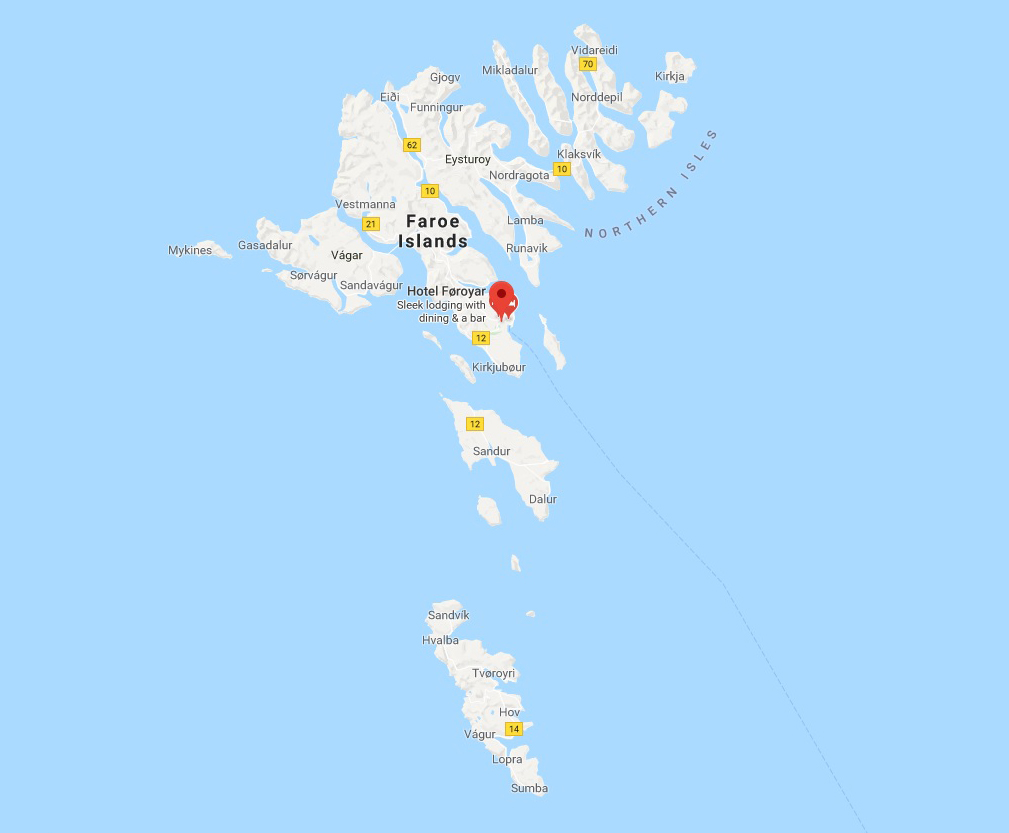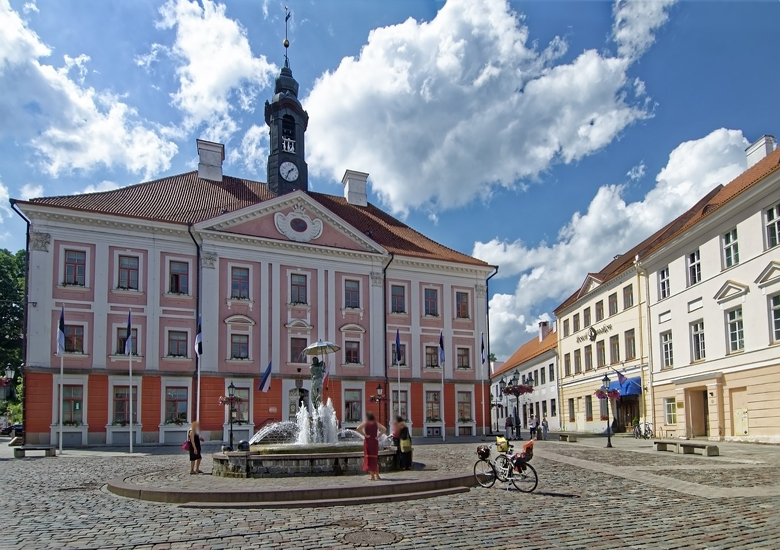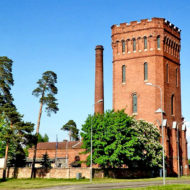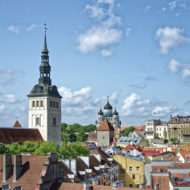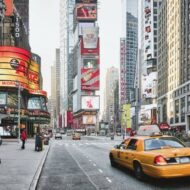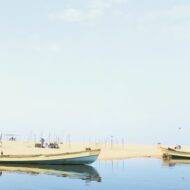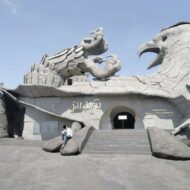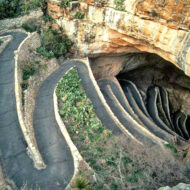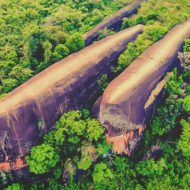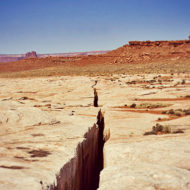Tartu (formerly known as Dorpat or Yuryev) is the second largest city in Estonia with a population of 100,000. Understand : Tartu is a Hanseatic city and a university town. It is the oldest city in Estonia, dating back to 1030. Its ancient name of ‘Tarbatu’ was shortened to ‘Tartu’ in Estonian and to ‘Dorpat’ in German. Although large parts of the town were destroyed in WWII, Tartu still has a charming old town surrounded by large parks (some of which used to be fully built-up neighbourhoods before the war).
Access : Coordinates: 58.383333, 26.716667 / By plane : Tartu Airport (TAY IATA) (10 km south of the city centre). As of October 2015, Tartu is served daily by a single Finnair/Flybe flight from Helsinki. The airport is, therefore, little more than an embarkation/disembarkation point. If you want to rent a car, book in advance. Don’t expect any food at the airport.
Airport Shuttle, . Provides door-to-door service from the airport at €5. They can also pick you up before departure.
Alternatively, you can fly to Tallinn, which is only 180 km away with buses to Tartu running directly from the airport.
Riga (250 km from Tartu) may be an option as well – buses from the Riga Bus Station to Tartu are operated by Lux Express.
By bus : Buses arrive at the small 2 Tartu Bus Station at Turu 2, which is across the street from the Kaubamaja department store, 5-10 min walk from the central square of Tartu. The tiny building hosts a ticket office, luggage room, decent cafeteria, and R-kiosk. If you need more, head to the nearby shopping mall. When arriving from Tallinn, you can also get off the bus at one of the stops in the city centre.
Buses from Tallinn depart several times an hour between 05:00 and midnight, and stop at the Tallinn airport. The journey takes 2.5 to 3 hours and costs €2-10, before a discount available with an ISIC card. Some buses have free wireless internet and free drinks available. Note that Friday afternoon departures from Tartu to Tallinn (and Sunday night Tallinn-to-Tartu) are usually crowded during the school year as lots of students go home for the weekend.
Regular buses also run between Tartu and Narva (3 hr), Viljandi (1 hr), Parnu (2.5 hr), and Kuressaare (6 hr).
Tartu is a stop of international buses running between Saint Petersburg (8 hr) and Riga (4 hr). These buses typically run overnight, which makes their schedule from Tartu somewhat inconvenient. Another international route is from Tartu to Pskov in Russia (4 hr, note that websites and timetables use the Estonian name Pihkva).
Bus and train schedules within Estonia are easily available online – By train : Also, see last remark of the previous chapter.
3 Tartu’s train station is located only 1 km from the city center (end of J. Kuperjanovi street), but it is not in the city centre, and it is not well signposted either. The easiest way to find the train station is to follow Riia street uphill until you see the railway, and turn right along the tracks. The station building amply adorned with wooden carvings is a nice example of Estonian architecture. Inside, you won’t find more than a kiosk (not even an R-kiosk!) and a ticket machine.
Elron operates several daily trains between Tartu and Tallinn via Tapa. The journey takes 2 hr (express train) to 2.5 hr (regular train) and costs €11 for 2nd class and €14 for 1st class on an express train, or €10 for 2nd class and €12 for 1st class on a regular train. There is free Wi-Fi and tables with electric outlets on trains. 1st class passengers get more comfortable seats and may book a specific seat online.
Trains also run between Tartu and Valga on the Latvian border, with one daily connection further to Riga (5 hr). Railway tracks likewise go in the direction of Russia, but you can only reach the small station of Koidula on the Russian border. This station is less than 1 km from the 24/7 checkpoint, which is open for pedestrians. Once you are on the Russian side, catch a taxi or simply walk to the bus station of Pechory (2 km from the border), and continue to Pskov by bus.
By car : An excellent day trip is to drive from Tallinn to Tartu. Outside of Tallinn, it is a two-lane paved road with some construction ongoing to upgrade it. It takes two to two and a half hours. There are few sights of interest along the way. The terrain is flat and most of the road is bracketed by a birch trees and a few pines. Sam’s Grill (about 1/2 way between Tallinn and Tartu) or a bit fancier Pohjaka Mois are recommended as a place to stop. There is a gas station (Statoil) some kms away.
By boat : There are also ferry services between Tartu and Lake Peipus and Lake Lammijarv. Check with the Tourist Information Centre, or inquire at the river directly.
Get around : Tartu’s Old Town is navigable by foot, but if you want to go out of Old Town, there’s public transportation.
By bus : Tartu has a network of 19 intracity bus lines and 2 night bus lines. Single tickets cost €0.75 from a news stand or €1 from the driver. 10 single tickets from a news stand cost €8. A ticket for 1 day costs €2, 1-hour ticket costs €1. 10-day ticket costs €8. On lines 6A, 31, 32 and 33, which are being operated by Automen, the ticket costs €1.
Important lines are: 8 to Lounakeskus and Anne Kanal (popular beach)
32, 6 and 7 to Lounakeskus
7 and 20 to Tartu Railway Station
Bus line 69 is free, and runs between the bus station and the Lounakeskus shopping center on the edge of town. As this is a sponsored line, its buses do not have the red-and-white color scheme of regular municipal buses.
Attractions :
1 Main building of the University of Tartu.
2 Town Hall Square (Raekoja plats). The kissing students fountain is a symbol of Tartu.
3 Statue of Oscar Wilde and Eduard Vilde (Kirjanike Oscar Wilde ja Eduard Vilde malestusmark).
4 Soup Neighbourhood (Supilinn). Neighbourhood where all of the streets are named after soup ingredients. Features charming old wooden houses.
5 Former Soviet Airfield (Raadi) (In Raadi, north of Tartu).
Museums
6 Estonian National Museum (ERM), Muuseumi tee 2. 10AM to 6PM, closed on Mondays. The new building of the Estonian National Museum (Eesti Rahvamuuseum, ERM) is located north of the city centre near the Raadi mansion. It features a permanent exhibition on Estonian and Finno-Ugric culture, language, and traditions as well as various temporary installations. The museum can be easily reached from the city center on foot by following the newly constructed walkway along Roosi street (ca. 2 km total distance). €14.
7 KGB Museum, Riia 15b . This nondescript building was known as the Gray House and was the headquarters of the Estonian KGB. It tells the story of how the prisoners were treated there, and some stories about the Estonian resistance heroes, the Forest Brothers. The museum is small and does not have a very big sign, so look carefully.
8 Tartu Art Museum, Raekoja plats 18. W, F–Su 11–18:00 / Th 11–21:00.
9 Tartu City Museum, Narva 23. Classicist style structure was built as a town palace in 1790. The building is popularly called Catherine’s House. The legend has it that Empress Catherine II made a short stay there. It is not true, though. The permanent exhibition provides a good insight into Tartu’s long history up to 1920.
10 Estonian Sports and Olympic Museum, Ruutli 15. M-Su 11-19. The Baltics biggest museum designated to sports, with several interactive exhibits. Please note that the winter sports exhibition is at another site, in Otepaa town, which is about 45km from Tartu. 6 Euro, concession 5 Euro, family 15 Euro.
Parks and squares
11 Botanic Garden of the University of Tartu, 38/40 Lai.
12 Toome Hill. Many monuments, statues and historical buildings
13 Raadi Park (Located on cross of the streets Vahi and Narva maantee).
14 Barclay Park.
Churches
15 St. John’s Church (Tartu Jaani Church). 14th century church is famous for its thousands of medieval terracotta figures.
16 Cathedral ruins (on top of the Dome Hill). From the 13th century and were dedicated to apostles St. Peter and Paul. Today the choir part houses the Tartu University History Museum, and the towers are reconstructed to sightseeing platforms.
17 St. Paul’s Church, Riia. An outstanding redbrick Finnish National Romanticist style building by the famous Finnish architect Eliel Saarinen.
18 St. Peter’s Church, 104 Narva St. A Neogothic Lutheran church from 1903, is built on the grounds of the first general Estonian song festival which took place in 1869.
19 Roman Catholic Church, 1 Veski St. A beautiful neo-Historical redbrick building from 1899.
20 St. Alexander’s Orthodox Church, 19a Sobra St. A two-story church, designed by architect V. Lunski, with cupolas inspired by the Old Russian church architecture. It was deconsecrated 40 years ago but reconsecrated in summer 2003.
21 Uspensky Orthodox Church, 1 Magasini St. An early classical church built in 1783 with typical Russian classical elements. It’s located on the same place as the St. Mary Magdalene Church of a Dominican cloister founded before 1300.
Other buildings
22 Gunpowder Cellar. Dug into the side of the hill in 1767 as part of the complex of the bishop’s citadel. It was used as a gunpowder cellar until 1809. Until 1982 it served as a storage room for many different enterprises, and was later developed into a eating place. Today, the building hosts a bar/restaurant of the same name.
23 National Court, Lossi 17 (Dome Hill). Construction of the building began in 1763 as military barracks. Onto its ruins was built the university hospital in 1808, which functioned until 1990. Since 1993, the national court is again in Tartu, which is Estonia’s supreme judiciary court.
24 Old Observatory, Lossi 40 (on the old castle ruins on the Dome Hill). The observatory, designed by university architect J.W. Krause, was built at the beginning of the 19th century. Working place of many famous astronomers including Struve; indeed the observatory is a point on the world heritage listed Struve Geodetic Arc spanning from the Arctic Sea to the Black Sea.
25 Old Anatomical Theatre, Lossi 38 (On the Dome Hill). One of the first buildings of the re-opened Tartu University which was built in 1803-1805 according to the drawings of university architect J. Krause. Today the visitors are offered an exhibition of the history of medicine with preparates.
26 Barclay House, Raekoja 18. Late 18th century building. Duchess Barclay bought the house in 1819 after the death of her husband, Barclay de Tolly. The longitudinal wall of the building toward the river was built on the basis of the old town wall, while the other side was built on a new foundation. This is why the house is now askew and is popularly called the Tower of Pisa.
27 Tartu Centre for Creative Industries, Kalevi 13, 15, 17 (Kalevi St is the continuation of Ulikooli St after Riia St). Congregates several creative enterprises and creates therefore a creative atmosphere. The three buildings of the centre were built between 1830 and 1913 and represent different architectural styles: historicism and Art Nouveau.
Remains of the Town Wall.
Bridges
28 Angel’s Bridge (Toome hill). Built in the 19th century and spans Lossi Street.
29 Devil’s Bridge. Built in 1913 in honour of the 300th jubilee of tsarist Russia’s Romanov Dynasty, which is memorialised on the bridge by the dates 1613-1913.
30 Arched Bridge (Stand in the main square and look towards the river). Stands on the site of the original stone bridge of Tartu which was built in 1784 and blown up by the Soviets in WWII. This new bridge is only for pedestrians and allows you to do one of the most loved cultural activities of Tartu, walk over the top of the arch after a big night in the club. Just don’t let the cops catch you.
Modern architecture
During the last decade, Tartu has seen several interesting pieces of modern architecture being built. They are well worth a visit and give an insight of how people in modern Tartu think and live, in addition to traditionally history-driven image of the city. Some of them are right in the city-centre. See the yellow markers on the official Tartu Modern Architecture map. The map is in Estonian only, but selected images speak louder than words.
Activities : 1 Cinamon (Kinokeskus Cinamon). The biggest movie theatre in Tartu. edit
2 Ekraan. A popular movie theatre. It has two movie screens and first-rate Dolby SR/DTS sound system.
3 Toy Museum and Theater House, Lutsu 2. W-Su 11-18:00.
4 Tartu New Theatre (Tartu Uus Teater), Lai 37.
5 Athena – Conference and Incentive Centre, Kuutri 1.
6 Vanemuine Theatre, Vanemuise 6.
7 Harbour Theatre (Sadamateater), Soola 5B.
8 AHHAA Science Center, Sadama 1 . Su-Th 10-19:00, F-Sa 10-20:00. Interactive and entertaining science center. €12, discounts for students, families, etc.
9 Aura Waterpark (Aura Veekeskus), Turu 10. Pool: M-F 06:30-22:00, Sa-Su 9-22:00. Swimming pool, water park, fitness center Pool: €4-5 Water park: €6-7.
Lodi River Cruises, Emajoe 3 . Offers various cruises for up to 30 people along River Emajogi.
Festivals
Hanseatic Days. Third week of July, exact dates vary from year to year. Medieval festival featuring fairs, festivities, exhibitions, concerts, dances, merchants and tradesmen. Most events are free.
tARTuFF. Film festival in August. Themes include love and tolerance.
POFF – Black Nights Film Festival. Film festival at the end of November.
Go next : Tallinn / Soomaa National Park / Poltsamaa / Viljandi / Otepaa / Zwiebelberg / Mustvee / Narva


